Following its initial $160 million acquisition to acquire a 16.67% stake in REC Silicon in January 2022, Hanwha will now become the largest shareholder of REC Silicon by acquiring an additional 4.67% stake from Aker Horizons, a sustainability investment firm that had been co-owner of REC Silicon with Hanwha Solutions. The deal is valued at around $44 million.
REC Silicon operates two polysilicon manufacturing facilities in the United States, with an annual production capacity of 20,000 MT: 18,000 at Moses Lake, Washington, and 2,000 at Butte, Montana. Using hydropower-based clean energy, REC Silicon can produce low-cost polysilicon without emitting greenhouse gases.
The Moses Lake facility has been dormant for the last few years as it has been priced out of the Chinese market, and there are currently no solar cell manufacturers in the United States. Today Hanwha confirmed the factory should reopen in 2023.
“Today’s announcement is a major step in rebuilding the U.S. solar supply chain. Hanwha is a leading solar PV manufacturer globally, operating the largest module production plant in the U.S., while REC Silicon is the polysilicon producer with the lowest CO2 footprint worldwide. Hanwha has the right expertise to contribute to the successful reopening of Moses Lake,” said Kristian Røkke, CEO of Aker Horizons.
Now with Hanwha’s majority stake, the company pledges to secure American manufacturing capabilities across the full solar supply chain — from polysilicon development through final solar panel assembly.
“Our commitment to the U.S. is more serious than ever before,” said Justin Lee, CEO of Q CELLS. “We plan to make investments to secure capabilities across the entire solar supply chain, with the goal of supplying our partners with ‘Made in America’ products that will help the U.S. regain its leadership in clean energy solutions.”
Having secured a stable supply of key raw materials for solar PV panel production, Hanwha intends to follow up with subsequent investments in virtually every sub-sector of the domestic solar manufacturing industry.
Currently, Hanwha operates the largest module production facility in the United States through its solar panel business unit, Q CELLS. The Georgia-based factory can produce 1.7 GW of solar modules per year, accounting for nearly 20% of total module production capacity in the United States.
Combining low-carbon polysilicon with premium solar modules, Hanwha aims to create a comprehensive and fully domestic solar supply chain. The investment is also expected to add a substantial number of renewable energy jobs across America. Hanwha already employs up to 750 staff in Georgia at its module production facility. The company’s intention is to create many times that number of new jobs with its planned investments.
“We imagine a Moses Lake factory brought back to life with local workers clocking in and operating the plant,” said a Hanwha spokesperson in a press release. “Together with our module factory in Georgia and new planned investments, we will fulfill our pledge to create quality clean energy manufacturing jobs across the United States.”
Crucial to achieving this goal are durable, long-term policies to attract and sustain domestic solar manufacturing in the United States. Many in the solar supply chain are still banking on passage of the SEMA Act, which would provide manufacturing tax credits to domestic producers. In a letter to President Biden, the SEMA Coalition, representing American solar manufacturers supporting the legislation, said that the bill would add more than 30 GW to domestic solar manufacturing capacity in the U.S. by 2025, creating 18,000 direct and 60,000 indirect manufacturing jobs.
“Enacting SEMA is key to fulfilling our pledge to rebuild the U.S. solar supply chain with fully ‘Made in America’ products,” said the Hanwha spokesperson. “With a long-term plan to support domestic solar manufacturing, we can help America lead the clean energy revolution and win the fight against climate change.”
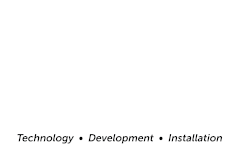
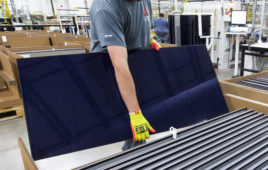
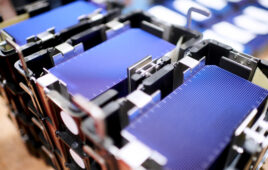
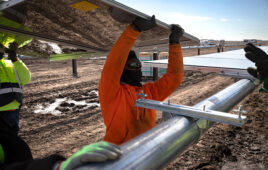
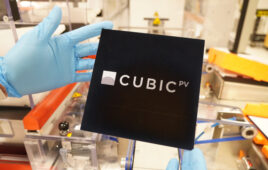
20,000 MT is perhaps enough for 6-7 GW of mono-crystalline manufacturing, assuming latest wafer thickness standards and best-of-breed production yield at ingot/wafer/cell stages. That would be something like 2% of installed global capacity of 1.02 MT in 2023. It’s great to see any capacity in the U.S., but we shouldn’t be fooled into thinking this deal alone will appreciably change the dynamics of the marketplace.
https://www.infolink-group.com/en/solar/analysis-trends/2020-polysilicon-industry-outlook
More important is China will still own the Market… Are there no American corps willing to step up and tackle this opportunity………
Thank you for the update.
REC seems to be the only game in town right now, the U.S. with the epiphany that China owns the silicon foundry capacity, the U.S. needs a couple more foundries here to feed wafers to new manufacturing facilities like Intel. If Hanwha pulls out of the U.S, market the REC facilities will once again be closed. We have just experienced when enough geopolitical clout is garnered to sanction a particular country, at the moment it is Russia. Folks would be naïve to think the same thing can’t happen to the U.S. IF the many corporations that have pulled out of Russia can happen there, there’s nothing stopping Hanwha (Q cells) from pulling out of the U.S. leaving REC in the lurch once more.